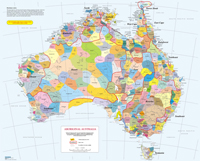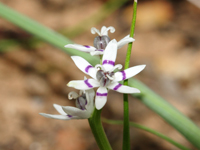A journey through the six seasons of the Wombat Forest
A Newstead Landcare presentation by Tanya Loos at the Newstead Community Centre, Thursday Oct 16th at 8pm.
Who says the first day of Winter is on June 1? Indigenous people around the world and here in Australia mark the seasons through the weather patterns, and the behaviour of flora and fauna. Inspired by this, naturalist Tanya Loos has created a six season calendar for the Wombat Forest region.
Tanya is a nature columnist for the Hepburn Advocate, and in 2013, published a book called Daylesford Nature Diary; six seasons in the foothill forests www.daylesfordnaturediary.com

The six seasons of the Wombat Forest.
Tanya will share how she used ten years of nature journal observations to adapt the Yarra Timelines calendar to the Wombat Forest area. If you like the idea of marking the seasons by such things as the arrival of spring migrants, or fabulous fruiting fungi – do come along.
Tanya is a very skilled ornithologist, field naturalist and writer and is a fantastic presenter into the bargain! She is currently ‘Habitat for Bush Birds’ Project Coordinator with Connecting Country.
So don’t miss this great night and let all your friends know about it. The presentation starts at 8pm at Newstead Community Centre on Thursday Oct 16th and will go for one hour. It will be followed by our very brief AGM and a light supper. Gold coin donations would be appreciated. Tanya will also have copies of her book for sale.

True Spring.

















































